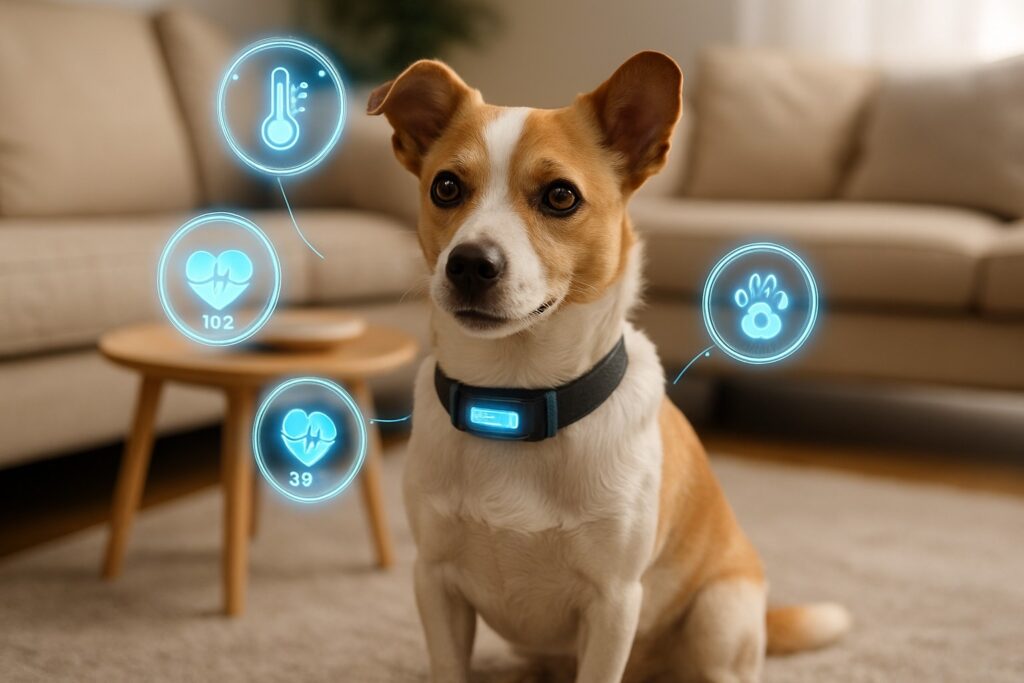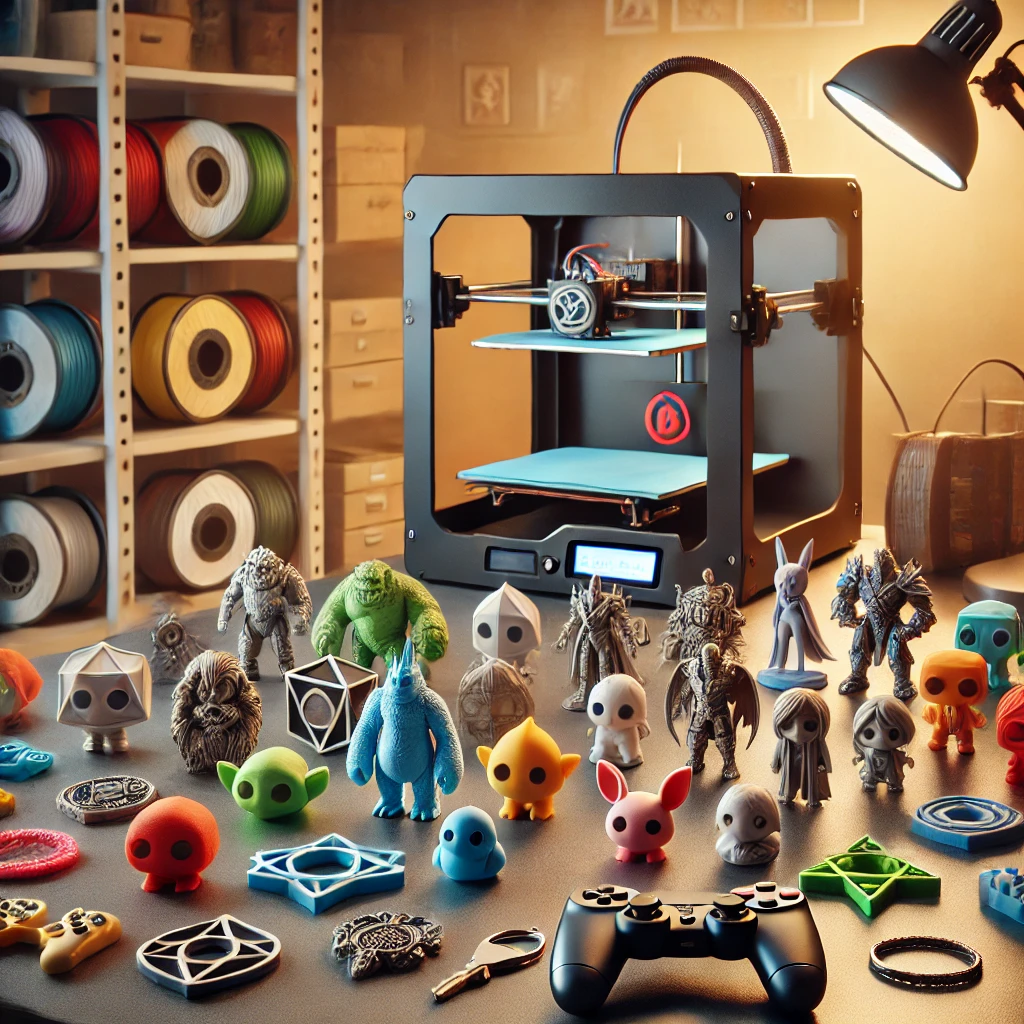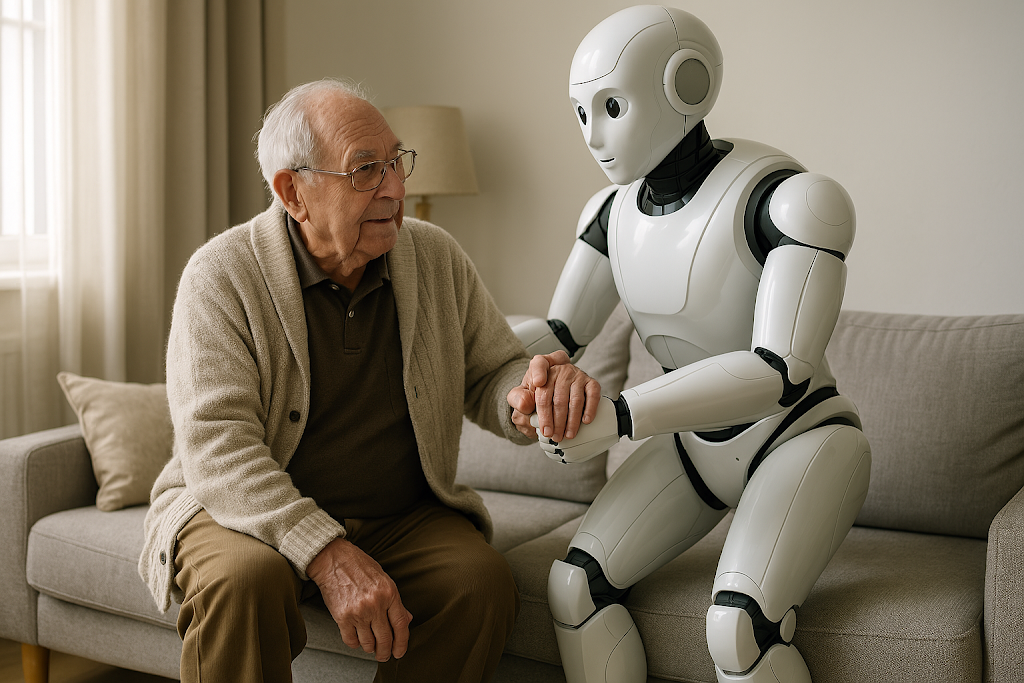Pet Tech: How Artificial Intelligence Is Taking Care of Our Pets

From cameras that recognize your dog’s emotions to feeders that use facial recognition to identify your pet — the future is here. Pet Tech is one of the most exciting frontiers of modern technology, transforming how we care for our furry companions. With AI-powered devices, sensors, and smart systems, pet care has become more connected, personalized, and efficient than ever before.
Today, a quiet revolution is happening in our homes: GPS collars, smart feeders, health-tracking apps, and interactive toys are reshaping how we bond with our pets. The Pet Tech ecosystem is no longer a futuristic concept — it’s a billion-dollar industry growing every year and improving the quality of life for both animals and humans.
What Is Pet Tech and Why Is It Growing So Fast?
Pet Tech is the intersection of “pets” and “technology,” referring to devices and software that use AI, IoT, and intelligent sensors to monitor, care for, and interact with pets. The mission is simple: ensure safety, health, and happiness — even when owners aren’t home.
According to Grand View Research, the global Pet Tech market is projected to surpass $35 billion by 2030. Three main factors explain this exponential growth:
- Pet humanization: animals are now treated as full family members.
- Busy lifestyles: automated devices help pet owners manage daily care remotely.
- Advances in AI: sensors and algorithms can now “understand” animal behavior with unprecedented accuracy.
Smart Feeders: When AI Becomes a Caregiver
Among Pet Tech innovations, smart feeders are some of the most popular. The latest models go far beyond simple scheduling. They use built-in cameras, motion sensors, and facial recognition to identify each animal — perfect for multi-pet households.
Models such as the Petlibro Granary Camera Feeder and Wopet SmartFeeder incorporate artificial intelligence to:
- Track feeding patterns and portion sizes;
- Automatically adjust food quantity based on weight and age;
- Send alerts when irregular eating behavior is detected.
Many also include two-way audio, real-time video monitoring, and app control. For pet parents who spend the day away, it’s like having a digital nanny that never forgets mealtime.
Smart Collars with GPS and Health Tracking
Another major advance in Pet Tech is the rise of smart collars. Equipped with GPS, accelerometers, and heart rate sensors, these devices don’t just track your pet’s location — they generate valuable health insights.
Brands like Whistle, Fi Smart Collar, and Tractive offer features such as:
- Real-time location tracking with up to 1-meter precision;
- Activity and sleep monitoring (like a smartwatch for pets);
- AI-driven alerts that detect unusual behavior such as scratching or restlessness.
The data syncs with a companion app that provides daily summaries and even recommends vet visits based on behavioral patterns. It’s a blend of data science and compassionate care.
But What About Data Privacy?
Even pets generate data now, raising concerns about privacy. The leading Pet Tech companies are adopting the same cybersecurity standards used for human wearables, including end-to-end encryption and full user control over data sharing.
Health and Behavior Tracking Apps
Apps are the invisible brain of the Pet Tech world. They connect to devices like collars and cameras, aggregating data into actionable insights that help owners better understand their pets’ emotions and routines.
Some notable examples include:
- Pawtrack: cat-tracking app for behavioral analytics;
- PetKit: all-in-one platform for feeding and sleep schedules;
- DogTV App: uses AI to generate relaxing videos tailored to a dog’s mood.
One of the most fascinating innovations comes from Japan: the Inupathy smart collar reads a dog’s heart rate and translates emotional states through LED colors. Joy, stress, and calmness each have their own hue — creating an entirely new form of emotional communication between species.
AI-Powered Cameras: Safety Meets Empathy
AI-driven cameras are another fast-growing sector in Pet Tech. Unlike regular security cameras, they identify specific animals, recognize sounds, and even analyze facial expressions. Leading models such as the Furbo 360 Dog Camera and Petcube Bites 2 are redefining how pet owners stay connected.
Key features include:
- Emotion detection: AI interprets barking, meowing, or posture changes to infer stress or loneliness.
- Remote interaction: speak to your pet, toss treats, and soothe them in real time.
- Smart home integration: compatible with Alexa and Google Home ecosystems.
Beyond monitoring, these cameras strengthen emotional bonds. Studies show pets recognize familiar voices through the speakers, reducing anxiety during long absences. It’s technology creating connection — not replacing it.
Interactive Toys and Cognitive Enrichment
Pet Tech isn’t only about monitoring — it’s about fun and enrichment too. Smart toys now combine sensors, AI, and gamification to keep pets mentally engaged and physically active.
Some popular products include:
- WickedBone: an autonomous robotic bone that reacts to your dog’s movement;
- CleverPet Hub: puzzle console for dogs using lights and sound for training rewards;
- Felix & Fido PlayDot: automated laser toy with adaptive play modes.
These devices are based on animal-behavior research, helping prevent anxiety, boredom, and destructive habits — turning playtime into mental exercise.
Pet Tech and the Future of Veterinary Medicine
The impact of Pet Tech on veterinary medicine is profound. Continuous monitoring enables earlier diagnoses and personalized treatments. Imagine a veterinary smartwatch detecting fever or irregular heartbeats and alerting your vet before symptoms escalate.
Clinics worldwide are already adopting AI systems to interpret tests and predict hereditary diseases. Platforms such as VetGuardian use contactless motion and breathing sensors to monitor hospitalized animals — minimizing stress and improving accuracy.
A Real Example of AI in Veterinary Care
The European startup Animoscope developed an app that uses AI to analyze short videos of pets and identify signs of pain or distress with over 90% accuracy. It’s like having an instant translator for animal discomfort — a game-changer for veterinary diagnostics.
Benefits and Challenges of Pet Tech
Like any technological leap, Pet Tech brings both remarkable advantages and legitimate concerns. On the bright side:
- Continuous health and safety monitoring;
- Faster location tracking in case of escape;
- Enhanced communication and bonding between pets and owners;
- Longer, healthier lives through data-driven prevention.
However, challenges remain:
- High cost: premium products are still pricey for many consumers;
- Overreliance on technology: devices can’t replace human intuition and care;
- Data privacy: connected devices require strict digital security standards.
Overall, the balance is positive — technology is helping us understand animals in ways once thought impossible.
My Personal Take: The Future of Pets Is High-Tech
I find it absolutely fascinating to watch how technology is revolutionizing pet care. As someone who loves animals, I’m thrilled to see how Pet Tech is bridging empathy and innovation. Watching an AI recognize a cat’s face or detect dog’s stress feels like living in a science-fiction story — but it’s real, and it’s beautiful. Living in this era — where love for animals meets technological progress — is simply amazing.
Conclusion: Pet Tech Is Here to Stay
Pet Tech is redefining what it means to care for our pets. What was once a luxury is quickly becoming a standard of responsible pet ownership. From GPS collars to emotional AI cameras, this movement blends compassion, data, and creativity.
The future of pet care is smart, connected, and full of heart — just like our four-legged friends deserve.
What do you think of all these new products for our pets? Do you already own a Pet Tech device? Let me know in the comments—I’d love to hear!
🐾 Want to Stay Updated on Pet Tech Trends?
Subscribe to the TechInNess newsletter and get exclusive insights on technology, innovation, and artificial intelligence for daily life.
Frequently Asked Questions
- What is Pet Tech?
It’s the use of technology and AI to monitor, care for, and interact with pets. - How do smart collars work?
They use GPS and health sensors to track real-time activity and wellness data. - Do these devices replace veterinarians?
No — they complement human care, helping with prevention and early detection. - What are the most popular products?
Smart feeders, AI cameras, and GPS tracking collars. - Is Pet Tech safe?
Yes, when companies follow proper data protection and safety standards. - Is it worth investing in?
Definitely, especially for owners who spend long hours away from home.
Sources
- Grand View Research – Pet Tech Market Analysis
- Whistle – Smart Pet Collars
- Tractive – GPS Pet Trackers
- Petlibro – Smart Feeders
- Inupathy – Emotion-Sensing Dog Collar
- VetGuardian – AI Veterinary Monitoring



